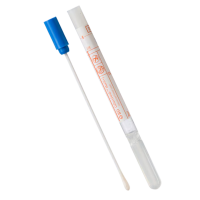
Test Code: 4550
CPT Code(s): 87070
Clinical Significance: Aerobic bacteria cause a variety of human infections. Proper specimen collection and transport, media and incubation are important criteria for the recovery of aerobes. The primary aerobic bacterial agents of skin and tissue infections include S. aureus, P. aeruginosa, members of the enterobacteriaceae, and beta-hemolytic streptococci. The results of aerobic cultures assist the clinician with diagnosis and treatment of patients with bacterial infections. Proper interpretation of culture results is dependent on specimen source and known pathogenicity of the isolated organism.
Includes: If culture is positive, identification will be performed at an additional charge (CPT code(s): 87077 or 87140 or 87143 or 87147 or 87149). Antibiotic susceptibilities are only performed when appropriate (CPT code(s): 87181 or 87184 or 87185 or 87186).
Methodology: Bacterial Culture, Aerobic; Includes routine isolation and identification procedures, antibiotic susceptibility testing when appropriate
Alternative Name(s): Aerobic Bacteria Culture,Aerobic Wound,Superficial Wound Culture,Aerobic Culture
Supply: #S02 Blue CultureSwab™ MaxV collection & transport or #T64 Red Serum (NO GEL) 6mL
Preferred Specimen(s): Superficial wounds, abscess, aspirates, animal bites
Special Instructions: Skin biopsy should be submitted in small amount of sterile, nonbacteriostatic saline (contact DLO's Customer Service at (800) 891-2917, option 2 for specific instructions). For deep wounds and surgical specimens or whenever anaerobic infection must be ruled out, see test code 4446 (Culture, Aerobic and Anaerobic with Gram Stain).
Transport container: Transport swab with Aimes gel (blue-cap)
Transport temperature: Room Temperature
Specimen stability: Room Temperature - 48 hours
- Frozen specimens
- Specimens submitted in formalin
- Dry swabs
- Expired transport media
- Specimens greater than 48 hours old
For additional supply or collection device information, please contact DLO's Customer Service at (800) 891-2917, option 2.
The CPT codes provided are based on AMA guidelines and are for informational purposes only. CPT coding is the sole responsibility of the billing party. Please direct any questions regarding coding to the payor being billed.
